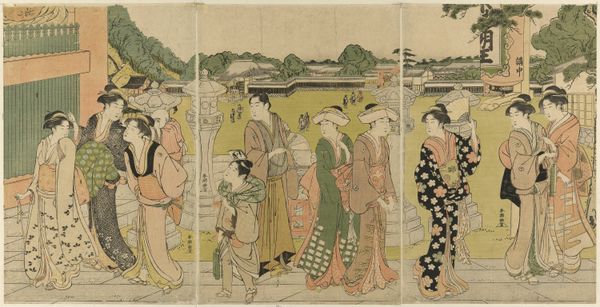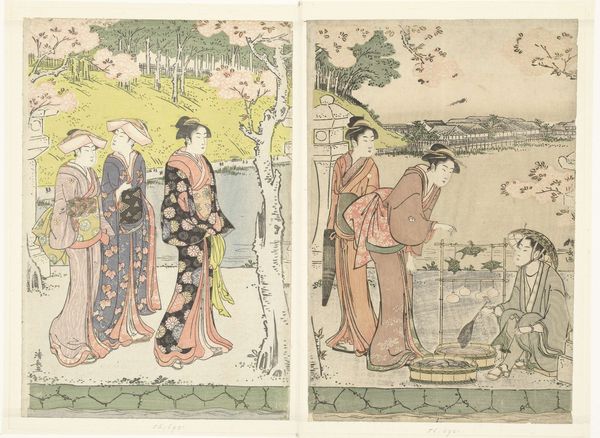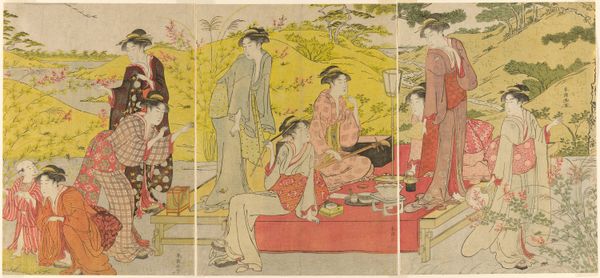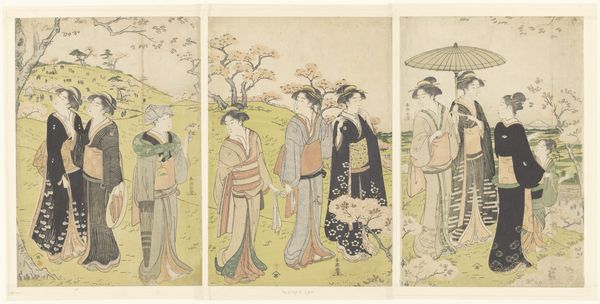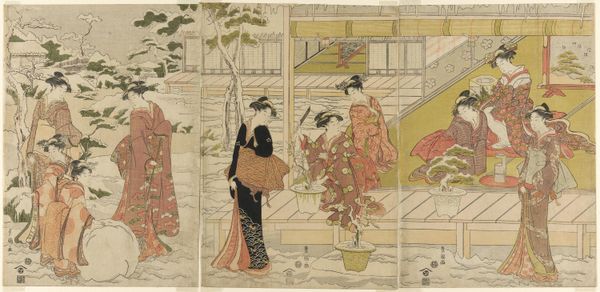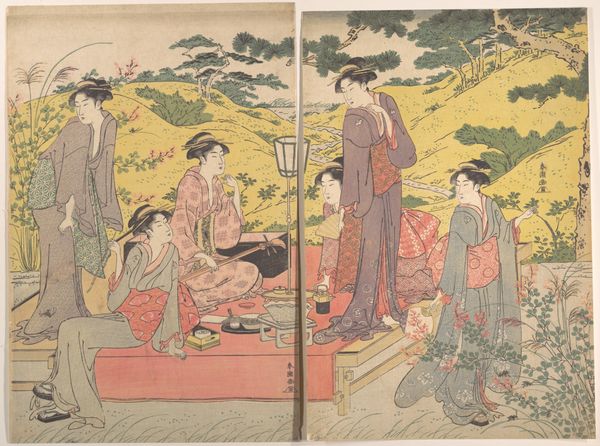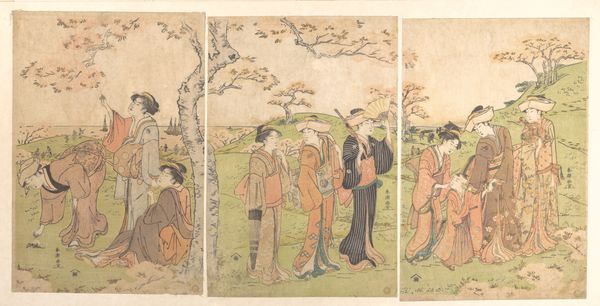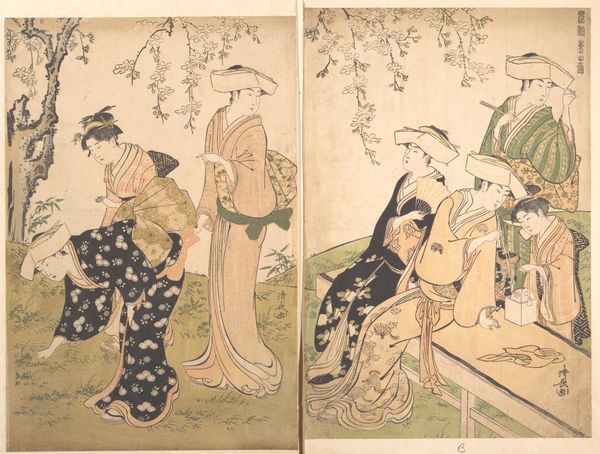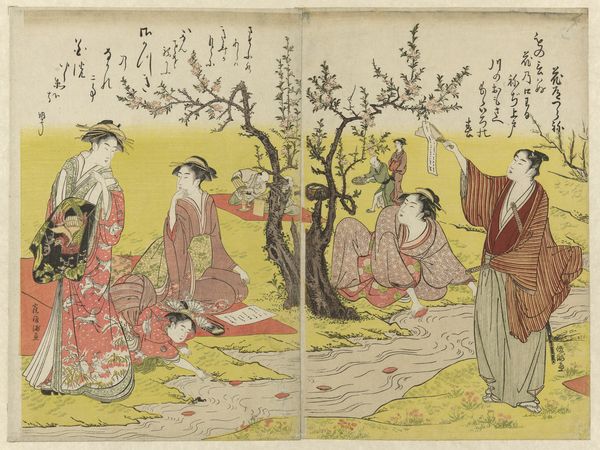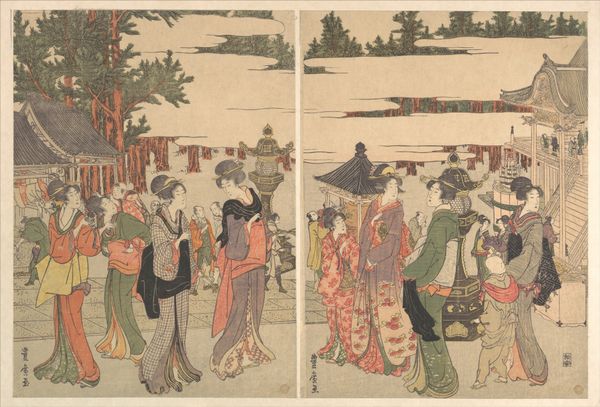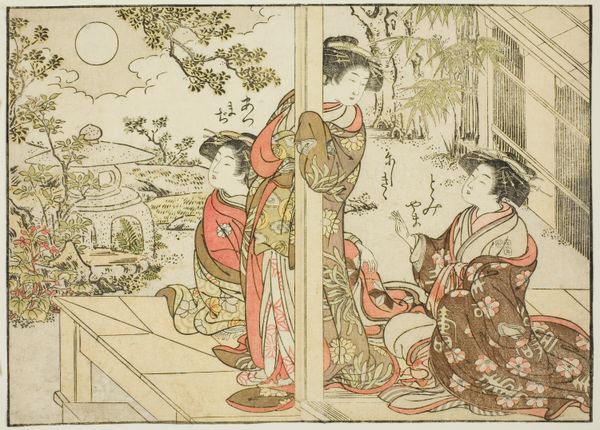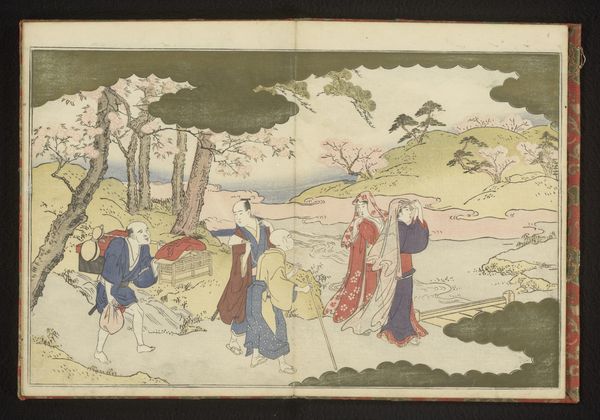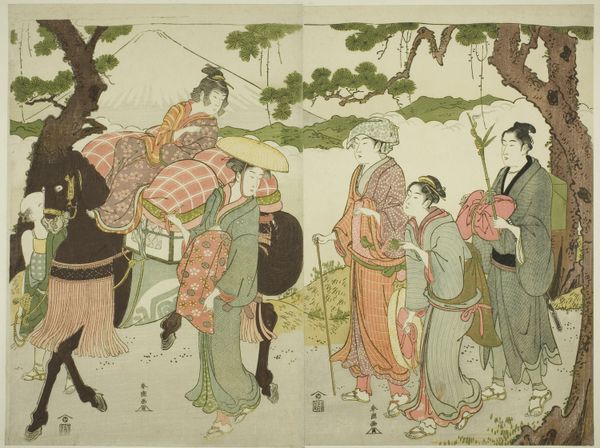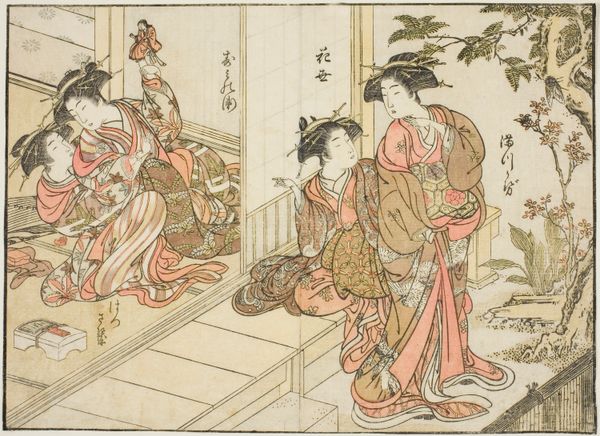
Viewing Cherry Blossoms from a Teahouse on Asuka Hill c. 1789 - 1790
0:00
0:00
print, paper
# print
#
asian-art
#
landscape
#
ukiyo-e
#
figuration
#
paper
Dimensions: 50.8 × 71 cm (20 × 27 15/16 in.)
Copyright: Public Domain
Curator: Here we have a beautiful example of ukiyo-e printmaking: Chōbunsai Eishi's "Viewing Cherry Blossoms from a Teahouse on Asuka Hill," created around 1789-1790. Editor: The light, airy colors immediately strike me. There's a gentle atmosphere, a feeling of delicate transience, fitting for a scene centered on cherry blossoms. Curator: Exactly. Eishi, working in the late Edo period, was known for his depictions of elegant women, and here we see that elegance linked directly to leisure and cultural observation. Viewing cherry blossoms, or "hanami," was, and remains, a significant cultural event, and the teahouse setting offers a glimpse into the refined spaces in which women navigated social rituals. Editor: These women, draped in ornate kimonos, feel positioned both as observers and observed. It's interesting how the composition allows us to consider how social dynamics influence interactions during these communal activities. Is there an element of performance in the "hanami" celebration that might challenge modern feminist interpretation? Curator: That's a perceptive point. Ukiyo-e prints like this weren't merely aesthetic objects. They served as promotional materials, offering viewers a glimpse into the fashionable trends, social customs, and leisure activities enjoyed by certain classes in Edo society. The women, styled and poised, play into constructed desires and aspirations of the period. Editor: So, we're really considering not just the aesthetics, but how these images propagated a certain lifestyle—who was invited in and, crucially, who was left out. Where the power dynamics sit within such refined and supposedly passive forms of gathering? Curator: Precisely. And that dynamic continued through consumption. These prints would be collected, traded, discussed, feeding into a larger dialogue on taste and status. The museum then participates in a later stage of assigning "cultural capital". Editor: Thinking about this print in the context of access and representation complicates any romantic reading of a scene featuring the cherry blossoms. I leave the encounter thinking what spaces could we make sure the cherry blossoms are being enjoyed in? Curator: I think your thoughts add another layer to the work, even beyond Eishi's original intentions, revealing connections that are vital for viewing this in the twenty-first century.
Comments
No comments
Be the first to comment and join the conversation on the ultimate creative platform.
